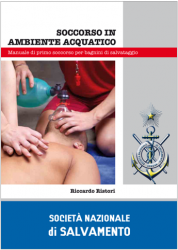Linee guida ILO sui rischi biologici 2022
| ID 17073 | | Visite: 1702 | Documenti Sicurezza Enti | Permalink: https://www.certifico.com/id/17073 |
Linee guida ILO rischi biologici 2022 / Technical guidelines on biological hazards 2022
ID 17073 | 11.07.2022 / Allegato
The technical guidelines on biological hazards apply to all workers in all branches of economic activity.
The aim of the guidelines shall be to provide advice to governments, employers, workers and their representatives on what should be done to prevent and control work-related injuries, ill health, diseases, and deaths related to exposure to biological hazards in the working environment.
For the purposes of these guidelines, a biological hazard refers to any micro-organism, cell, or other organic material that may be of plant, animal or human origin, including any which have been genetically modified and which can cause harm to human health. This may include but is not limited to bacteria, viruses, parasites, fungi, moulds, prions, DNA materials, bodily fluids, and any other microorganisms and their associated allergens and toxins. Biological hazards can also be considered to include biological vectors or transmitters of disease.
_________
Biological hazards, both infectious and non-infectious, can be a significant health threat in numerous sectors and workplaces worldwide, and can cause occupational and work-related diseases.
Since the ILO adopted the Anthrax Prevention Recommendation, 1919 (No. 3), there have been significant advances in the knowledge of biological hazards, their prevention and the treatment of the diseases they cause. The importance of non-infectious biological hazards is becoming increasingly apparent in both workplaces and communities and it is recognized that workplaces can help prevent and control global health threats such as tuberculosis, HIV/AIDS, malaria and influenza, as well as pandemics such as the COVID-19 pandemic. The Global Strategy on Occupational Safety and Health, which was adopted by the International Labour Conference at its 91st Session in 2003, underscored that the development of new instruments in the area of biological hazards should be given the highest priority.
In November 2011, the ILO’s Governing Body agreed to the establishment of a Standards Review Mechanism (SRM) to contribute to the implementation of the ILO standards policy and to consolidate tripartite consensus on the role of international labour standards in achieving the ILO’s objectives. In 2015, a tripartite working group (TWG) was established as one component of the SRM.
At its third meeting in September 2017, the SRM/TWG reviewed 19 instruments related to occupational safety and health (OSH) and recommended to the Governing Body that: (a) follow-up action should be taken to revise Recommendation No. 3 through an instrument addressing all biological hazards; and (b) technical guidelines on biological hazards should be published.
The COVID-19 pandemic has heightened the urgency of those recommendations.
The Governing Body decided to place on the agenda of the 112th and 113th Sessions (2024–2025) of the International Labour Conference an item related to OSH protection against biological hazards. The establishment of technical guidelines on the control of workplace biological hazards will provide the technical basis for that discussion. Guidelines are not legally binding. These guidelines are based on the full principles, rights and obligations set out in the international labour standards and nothing set out in these guidelines should be understood as altering the obligations of the Member States that ratified those standards.
Introduction
Purpose and scope
Chapter 1. General obligations responsibilities, duties and rights
1.1. The competent authority
1.2. Employers
1.3. Occupational health services
1.4. Workers
1.5. Collaboration and cooperation
Chapter 2. Risk management at the workplace level
2.1. Biological hazard identification and risk assessment
2.2. Control measures
2.3. Risk communication
Chapter 3. Workers’ health surveillance
Chapter 4. Information, instruction and training
Chapter 5. Investigation of dangerous occurrences occupational accidents and diseases
Chapter 6. Recording and notification of occupational accidents and diseases
Chapter 7. Preparedness and response to emergencies
Chapter 8. Inspection and compliance with legal provisions
Appendices
1. Risk assessments using a numerical weighting system to determine priorities for action
2 Applying the hierarchy of controls
3. Possible biological hazards associated with work activities
4 Main ILO and WHO references for the management of biological hazards in specific sectors
ILO Geneva, 2022
Meeting of Experts for the tripartite validation of the technical guidelines on biological hazards (Geneva, 20–24 June 2022)
Collegati








































